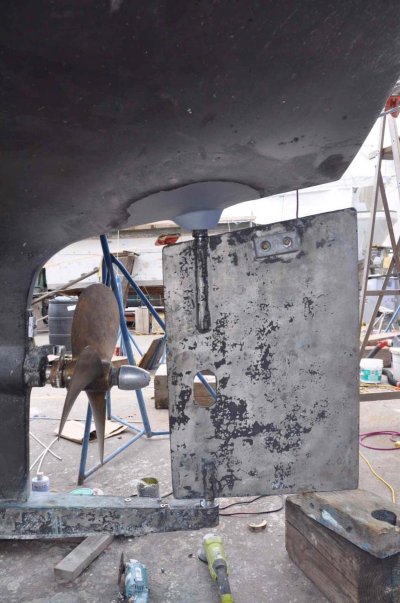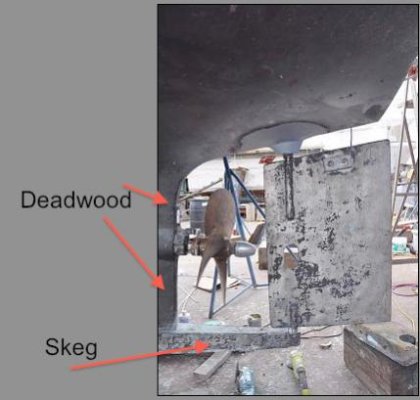JDCAVE
Guru
- Joined
- Apr 3, 2011
- Messages
- 2,902
- Location
- Canada
- Vessel Name
- Phoenix Hunter
- Vessel Make
- Kadey Krogen 42 (1985)
So a PO has used a lag bolt screwed into the skeg, just above the shaft tube to hold on a zinc to protect the mounting brackets for the line cutters on the shaft. This is a poor approach and involved sikaflex in a half-assed attempt to keep the bolt in place. I’m going to drill out and tap the bracket to put on a bolt.
I’ve bored out this hole to remove all traces of the caulking and it’s now about 5/16” and penetrates a little over an inch. Initially I wanted to fill it with thickened epoxy but that’s proving the devil to get in place.
Is there some sort of epoxy putty that can be rolled into a cylinder, inserted into the hole and tamped into position before it sets? I wonder if this JB weld product might be suitable?
https://www.jbweld.com/product/waterweld-epoxy-putty
If that isn’t suitable, suggestions?
Note: nothing is particularly structural here.
Jim
I’ve bored out this hole to remove all traces of the caulking and it’s now about 5/16” and penetrates a little over an inch. Initially I wanted to fill it with thickened epoxy but that’s proving the devil to get in place.
Is there some sort of epoxy putty that can be rolled into a cylinder, inserted into the hole and tamped into position before it sets? I wonder if this JB weld product might be suitable?
https://www.jbweld.com/product/waterweld-epoxy-putty
If that isn’t suitable, suggestions?
Note: nothing is particularly structural here.
Jim
Last edited:

 ). Four is to agitate the filled hole with a toothpick or something (not very practical if hole faces downward).
). Four is to agitate the filled hole with a toothpick or something (not very practical if hole faces downward).



